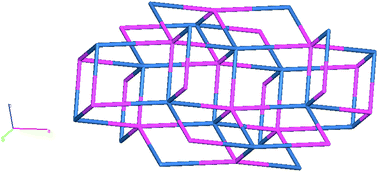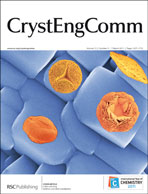Six new coordination compounds, namely [Co(H2bptc)]n (1), [Mn(H2bptc)]n (2), [Cd2(bptc)(phen)2(H2O)2]n (3), [Eu2(cpa)3(DMF)2]n (4), [Nd2(cpa)3(DMF)2]n (5) and [Pr2(cpa)3(DMF)2]n (6) (bptc4− = biphenyl-2,2′,4,4′-tetracarboxylate anion, phen=1,10-phenanthroline, cpa2− = 4-chloroisophthalic acid anion) were synthesized under hydrothermal conditions. Their structures have been determined by single-crystal X-ray diffraction analysis and further characterized by elemental analysis, IR spectra, and thermogravimetric analysis. Co and Mn compounds are isostructural, and possess a three-dimensional 5, 5-connected network. In Cd compound, multicarboxylate ligand H4bptc link Cd centers to generate a two-dimensional 4, 4-c net structure with phen acting as terminal ligand. Eu, Nd, and Pr compounds have similar structures, and cpa2− ligands link lanthanide cations to generate a two-dimensional sheet structure. Magnetic susceptibility measurements indicate that the Co compound has a dominating ferromagnetic coupling between Co(II) ions, and Mn compound exhibits antiferromagnetic coupling between Mn(II) ions. Furthermore, their luminescent properties are also determined in the solid state at room temperature.


 Please wait while we load your content...
Please wait while we load your content...